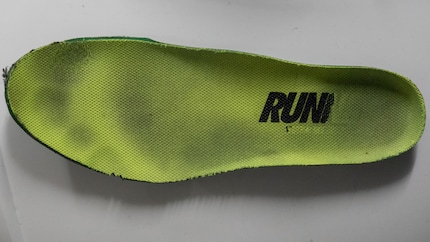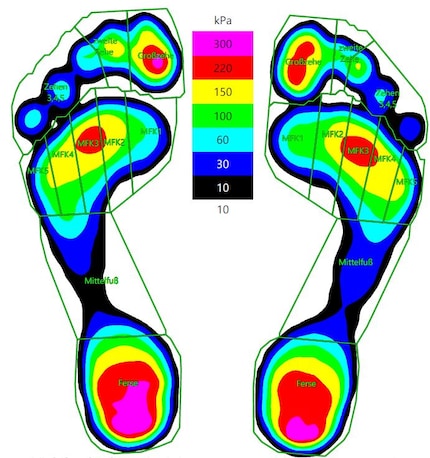
Guide
3 steps to stop smelly shoes in their tracks
by Michael Restin

My shoes reveal a lot about how I stand or walk through life. Yours also tell of your walking history. At least in this expert’s mind, an inquiry is kickstarted whenever she spots a pair of sneakers left carelessly at the front door.
It seems, Pascale isn’t thinking: «Those blue Nikes belong to so-and-so,» but «judging by the way those shoes have been put there, they must belong to so-and-so». What’s going on there? These are observations made by someone who’s been intensely involved in running for a long time. And she’s helping people get better at it.
«We all have a natural pattern of walking. So when we take our shoes off, they often stand there just as we would.» That’s her hypothesis. Of course, this only applies when you’re not using your hands to slip out of your shoes, not neatly placing those sneakers in front of the door and not flinging your kicks off your feet.
I put the hypothesis to the test and slip out of my shoes by stepping on the right heel with the left shoe and then liberating the left foot in the same way. My shoes look like Popeye punched me out of them with a fierce upper cut. The toes are pointing outwards, as you can see in the header photo. Spot on – that’s roughly how I stand. During the exercise, it also occurs to me that I’d never take off my left shoe first.
To keep the foot in shape, good support is important, especially with running shoes. If the support weakens, Pascale observes indications of material fatigue. «I also pay attention to how the shoes are tied,» she explains. «If someone bends inwards a lot, the shoe laces are often pulled outwards. This is probably a subconscious attempt to compensate for the fabric expanding inwards and providing less support.»
If you have no idea what your legs get up to when you’re running, try taking a critical look in the mirror. And drop to your knees in front of it. Ideally, your kneecap will push straight out and slightly out over your second toe. For many people, this looks different, often with the knee tilting inwards. You should try getting familiar with your leg axes and seek professional advice if you experience any problems.
Note to self: even the ideal can cause fabric damage. I’m a long way from the ideal running style, but my old shoes are still in pretty good shape except for the heel marks. Pascale says: «They still look totally okay.» I rarely run with them anymore and usually go around on thinner soles, but clearly, I don’t need to throw them away yet. I’ve just got to keep checking them.
Speaking of patterns, black socks and sweat have left more traces of my foot on the insole. There’s an imprint there that looks quite familiar to me.
Interesting clues that I’ll pay attention to more closely in the future. One pattern shows up over and over again as I run: little things in one place can make a big impact elsewhere. That’s why I’ll be continuing with tiny movements in the next instalment of my investigation. On the trail of ankle joint stability.
Simple writer and dad of two who likes to be on the move, wading through everyday family life. Juggling several balls, I'll occasionally drop one. It could be a ball, or a remark. Or both.
Interesting facts about products, behind-the-scenes looks at manufacturers and deep-dives on interesting people.
Show allAllow me: my name is Michael, I’m 41 years old and I’m suspected of being a brutal heel runner in my past. This suspicion was voiced by Pascale Gränicher, a track and field athlete and physiotherapist at the Center for Prevention and Sports Medicine at Balgrist University Hospital. She has an eye for movement and its effects. I’m learning to walk with her. Well, I’m trying to, at least. In any case, I’m learning to see walking from a different angle. A more precise angle. More detailed.
An extensive gait analysis showed me the interplay of my body and what forces are at play during each step. On day one at foot school, I learned to identify weak points and work with everything my feet give me. I also found out that Pascale has developed a kind of personal shoe radar. «When I go to a friend’s house, I can often tell who’s there by the position of their shoes,» she says at one point between technical explanations. Really? Now that’s interesting.
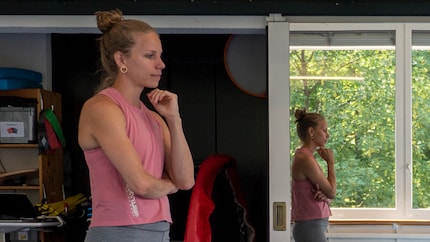
«This isn’t based on scientific facts or anything, it’s just something I’ve noticed,» says Pascale, who can deduce even more from shoes that have been put down. «Of course, it also depends on whether we’re talking about a casual shoe or a running shoe. But if there’s a dominant side, you can see it in the wear.» It’s worth taking a closer look at your shoes once in a while when they’re no longer brand new. «When you take them off, you’ll be able to see which way they’re tilting,» Pascale adds. In my case, it’s towards the outside, where the sole is worn.
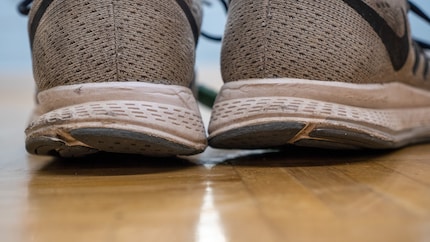
«You were definitely a heel runner at some point, and you touched down on the outer part of your shoes,» is Pascale’s conclusion. «Shoes that are worn down on the inside are actually more common. This happens with overpronation. Unless you’re a forefoot runner, of course. There, the heel reveals nothing.» There, you’d find signs of wear in the front area of the sole. Or on top, on the fabric of running shoes. «People who bend inwards because the transverse arch collapses usually have the little toe that pushes outwards, which causes the fabric to stretch,» Pascale explains. «And if someone has a bunion, you can see that, too.» The deformed big toe is a common problem in the complicated system that is the foot.
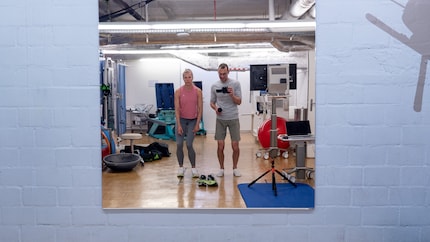
Pascale continues the brief shoe analysis I’ve asked her for. «I also often see that the fabric inside the shoe, next to the tongue, is kind of worn». Mine are intact in that spot because my feet do the opposite of the movement which can cause this kind of damage: «if you bend inwards, your feet sometimes hit together when running.» That’s one explanation. But even trained sprinters are prone to destroying their shoes in this spot. «It also happens with forefoot runners with a narrow track width,» says Pascale. «My own shoes are actually always worn away there.»
Track width is self-explanatory as a term, so I don’t press her for more info. Later, however, I’m keen to learn more and find the following explanation in the book «Medical Running»: «Track width refers to the distance between the inner edges of the feet. It differs depending on the width of the pelvis. While it’s about 5 cm when walking, the distance is significantly reduced when running – the feet touch down pretty much directly beneath the body’s centre of gravity. Fast elite runners run on extremely narrow track widths, ideally running on one line.»
«If you see heavy wear and tear, you should replace them. This is because the patterns you already have anyway aren’t supposed to be reinforced by your shoes.» If you can, you should run in neutral shoes without pronation support and train your arch – at least for shorter distances.
